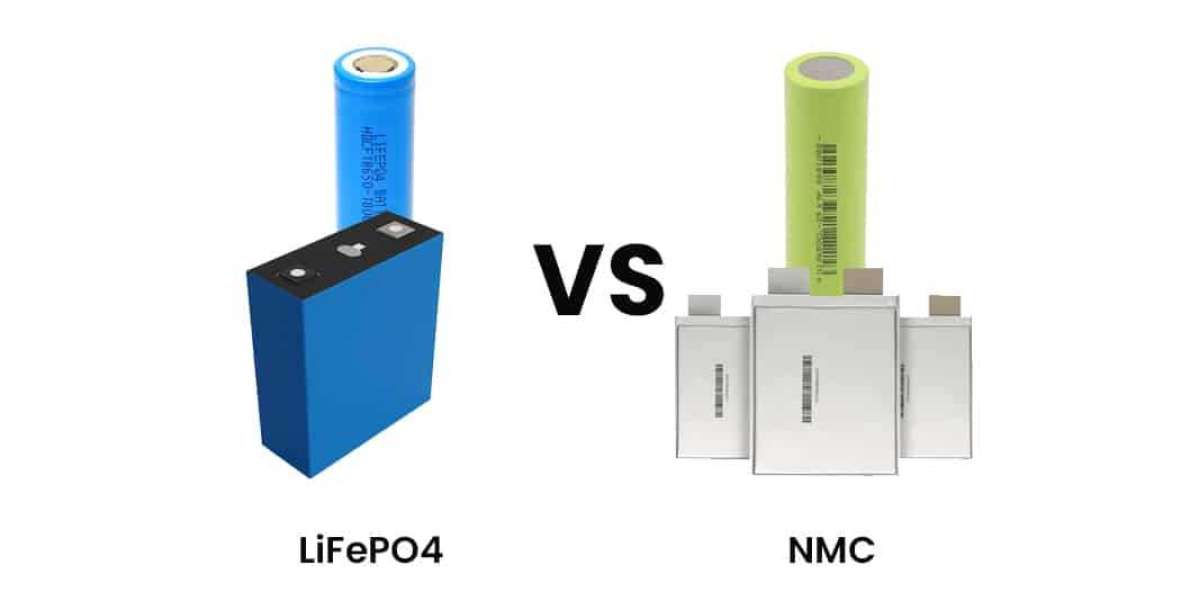Two leading candidates in the constantly changing field of energy storage are LiFePO4 (lithium iron phosphate) and NMC (nickel manganese cobalt) batteries. It is necessary to examine these two titans more closely as we go deeper into the complex realm of energy storage technologies, figuring out LiFePO4 vs NMC battery and what makes them unique and considering the potential uses.
Understanding the Chemistry Behind LiFePO4 and NMC Batteries:
LiFePO4 batteries, known for their stability and safety, are composed of lithium iron phosphate as the cathode material. On the other hand, NMC batteries boast a cathode made of a combination of nickel, manganese, and cobalt, offering a compelling blend of high energy density and extended lifespan. To truly comprehend their disparities, one must scrutinize the chemical intricacies inherent in each.
LiFePO4 batteries are celebrated for their intrinsic thermal stability, reducing the risk of overheating and thermal runaway. This makes them an ideal choice for applications where safety is paramount, such as in electric vehicles (EVs) and renewable energy systems. NMC batteries, with their higher energy density, are favored for applications where a compact and lightweight energy source is crucial, like portable electronic devices and certain automotive applications.
The Power of Safety:
LiFePO4 batteries have earned a reputation for being inherently safer than their counterparts, largely due to their robust chemical structure. The iron phosphate cathode offers a more stable platform for lithium ions, reducing the likelihood of thermal runaway and the associated safety hazards. This safety aspect has positioned LiFePO4 batteries as a preferred choice in industries where the consequences of a malfunction can be catastrophic.
Energy Density Showdown:
While safety is a critical parameter, energy density is equally pivotal, especially in applications where space and weight considerations are paramount. NMC batteries, thanks to the combination of nickel, manganese, and cobalt in the cathode, exhibit a higher energy density compared to LiFePO4 batteries. This gives NMC batteries a clear edge in electric vehicles and portable electronic devices, where maximizing energy storage in a confined space is of utmost importance.
Lifecycle Considerations:
Another battleground for LiFePO4 and NMC batteries is the realm of lifecycle performance. LiFePO4 batteries typically offer a longer cycle life compared to NMC batteries. This prolonged lifespan is a crucial factor in applications such as stationary energy storage systems, where minimizing maintenance and replacement costs over the years is a significant concern.
Environmental Impact:
Considering the growing emphasis on sustainability, evaluating the environmental impact of these battery technologies becomes imperative. LiFePO4 batteries, with their iron-based cathode, are generally considered more environmentally friendly compared to NMC batteries, which often involve the extraction of nickel and cobalt, metals associated with environmental concerns and ethical issues related to mining practices.
Applications and Market Dynamics:
The battle between LiFePO4 and NMC batteries extends beyond the realm of technical specifications. Market dynamics and application requirements play a pivotal role in determining the dominance of one over the other. LiFePO4 batteries, with their safety profile and longevity, find favor in sectors prioritizing reliability, such as renewable energy storage and critical backup power systems. NMC batteries, with their higher energy density, cater to the burgeoning demand for electric vehicles, portable electronics, and applications where compactness is a premium.
The Future Landscape:
As technology advances, the boundaries between LiFePO4 and NMC batteries may blur. Ongoing research and development efforts aim to enhance the strengths of each technology while mitigating their weaknesses. The future might witness hybrid approaches that combine the safety of LiFePO4 with the energy density of NMC, ushering in a new era of versatile and high-performance energy storage solutions.
The LiFePO4 vs NMC battery saga is a compelling narrative of safety versus energy density, longevity versus compactness. Each excels in specific domains, and the choice between them depends on the unique requirements of the application at hand. As the quest for more efficient and sustainable energy storage solutions continues, the evolving landscape promises innovations that could redefine the benchmarks for safety, energy density, and environmental impact in the world of batteries.



